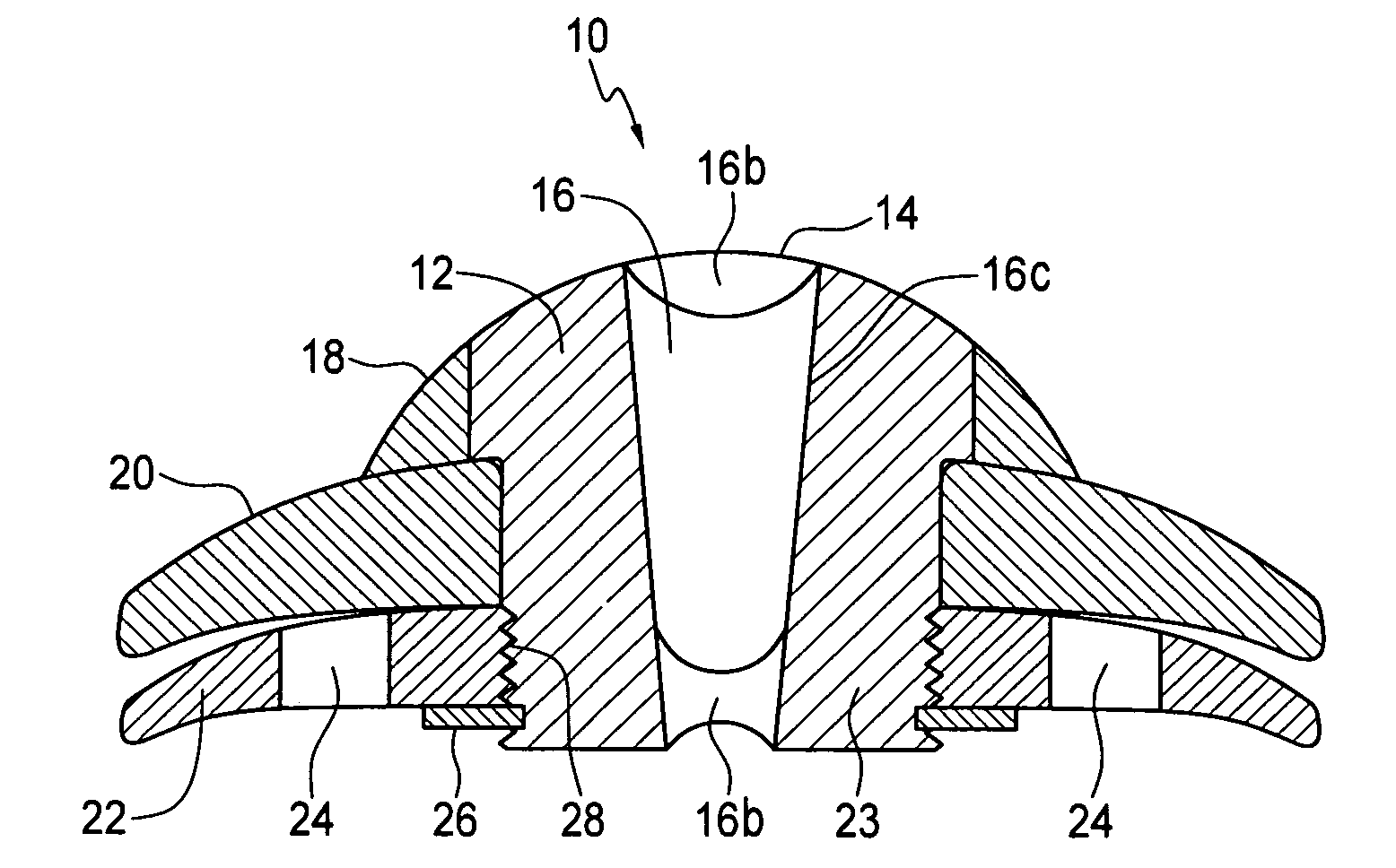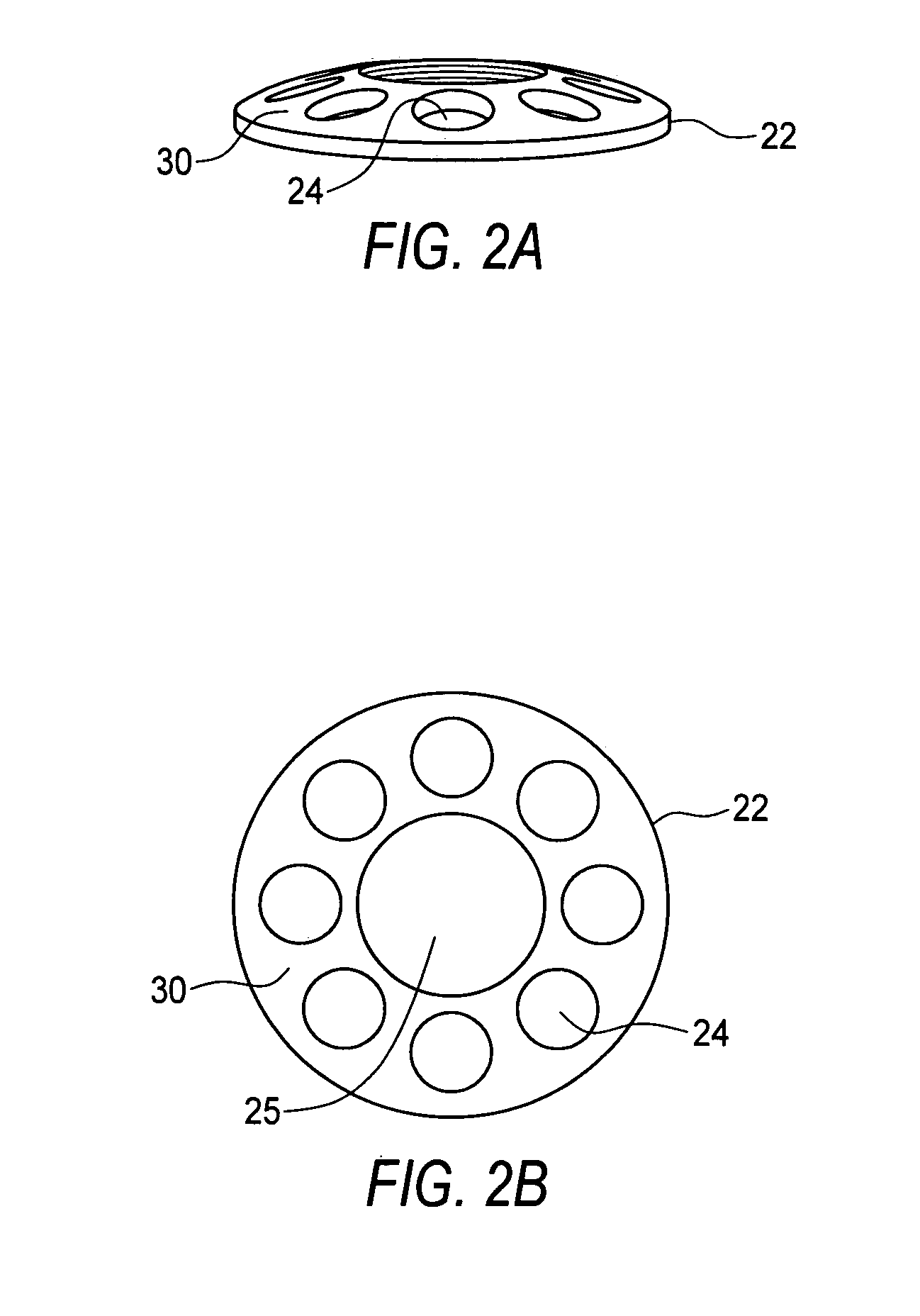Transcorneal vision assistance device
a technology of eye assist and transcorneal, which is applied in the field of eye assist, can solve the problems of degeneration typically causing severe vision loss in the central field, marked increase in the occurrence of debilitating eye diseases, and inability to fully realize the effect of telescopes, so as to maintain healthy tissue, maintain the beneficial effect of telescopes, and reduce endothelial cell coun
- Summary
- Abstract
- Description
- Claims
- Application Information
AI Technical Summary
Problems solved by technology
Method used
Image
Examples
Embodiment Construction
[0019]Devices of the invention are transcorneal, i.e., through the cornea, implantable telescope devices. An artificial cornea lens replaces a central part of a patient's cornea and provides a clear optical path through the cornea of an eye into which the telescope device is implanted. The position of the device in the eye provides greater range of magnification as the telescope is positioned at the patient's cornea. Additionally, the position and mounting capabilities of the device make it stable, i.e., its position will be maintained within the eye.
[0020]The invention overcomes a reluctance to consider replacement of a healthy cornea to correct vision problems concerning the retina, such as macular degeneration. Prior to the invention, others have and continue to believe that a healthy or mostly healthy cornea must be left in its state. Devices of the invention, seeking to improve vision unrelated to cornea problems, replace a part of a cornea with an artificial cornea that is par...
PUM
 Login to View More
Login to View More Abstract
Description
Claims
Application Information
 Login to View More
Login to View More - R&D
- Intellectual Property
- Life Sciences
- Materials
- Tech Scout
- Unparalleled Data Quality
- Higher Quality Content
- 60% Fewer Hallucinations
Browse by: Latest US Patents, China's latest patents, Technical Efficacy Thesaurus, Application Domain, Technology Topic, Popular Technical Reports.
© 2025 PatSnap. All rights reserved.Legal|Privacy policy|Modern Slavery Act Transparency Statement|Sitemap|About US| Contact US: help@patsnap.com



